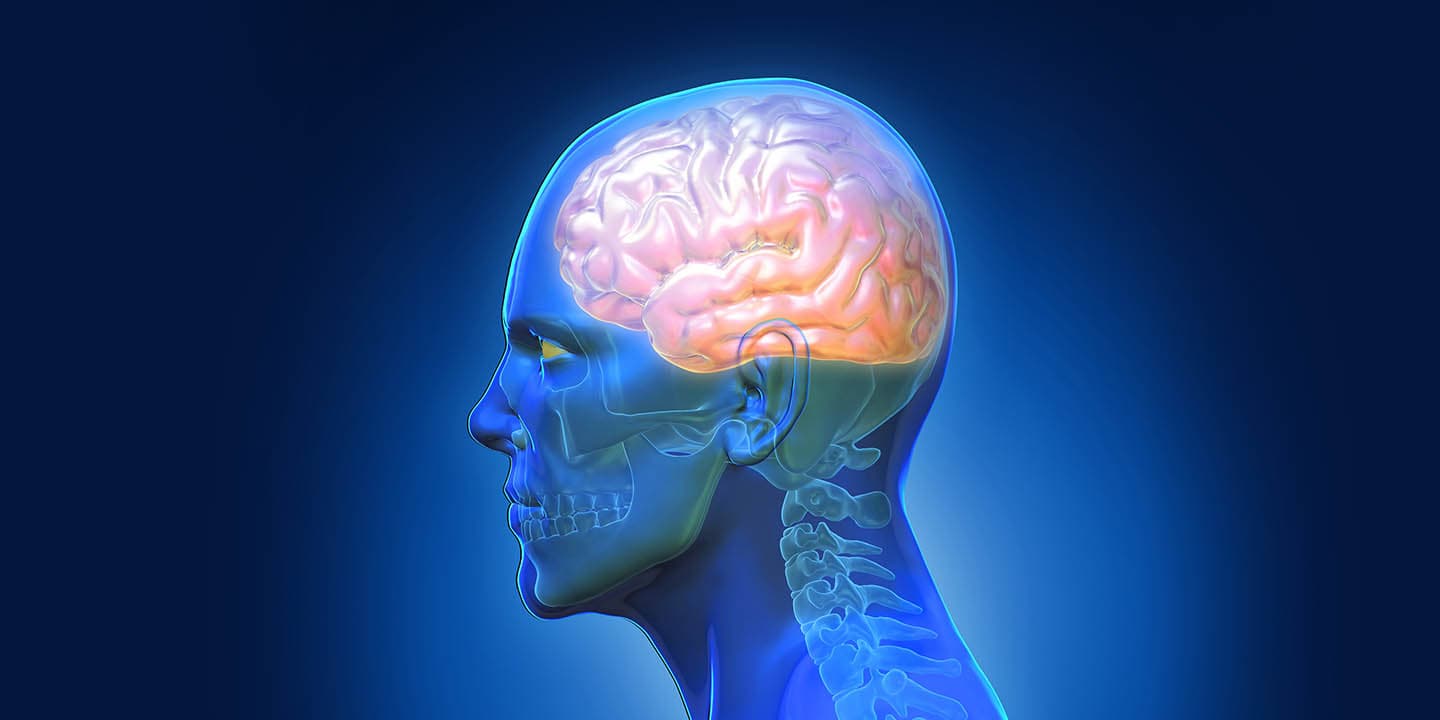Epilepsy: Meaning, Symptoms, Causes, and Treatment

Medically Reviewed By
Dr Divya Rohra
Written By Prekshi Garg
on Jun 30, 2022
Last Edit Made By Prekshi Garg
on Mar 17, 2024

According to recent reports from the World Health Organization, around 50 million people live with active epilepsy. This includes children and adults. Other than being one of the most common types of neurological disorder, Epilepsy is also quite prevalent in low- and mid-income countries.
However, the good thing about this neurological disorder is its effective management. With an early diagnosis and proper treatment, an epileptic person can live a carefree and comfortable life without worrying about seizures every other day.
Despite the prevalence and the ongoing research, people are still confused about the specifics of the disease and often believe the common myths and misconceptions. In this article we will explore more about Epilepsy meaning, symptoms, causes, and effective treatment options.
What is Epilepsy?
Epilepsy is a common neurological disorder that alters brain activity, leading to seizures in the patient. Some patients, during a triggered epileptic episode, can also experience loss of awareness, unusual cognitive behavior, etc.
The condition causes recurrent seizures in the patient due to “sudden, abnormal, electrical activity” in the brain. Anyone, irrespective of their sex, ethnicity, or race, can develop epilepsy. If you experience two or more recurrent seizures with no other possible contributing factors, your doctor can diagnose you with epilepsy.
What are the Types of Seizures in Epilepsy?
Epilepsy is often commonly diagnosed in children and older adults when they experience one or more recurrent seizures with no tangible medical explanations.
When it comes to seizures, they are further categorized into two types:
Generalized seizures – affect the whole brain.
Focal seizures – affect only a part of the brain.
Contrary to what you notice on television and in movies, not every epileptic patient experiences generalized seizures. Some experience mild seizures, which last for a few seconds and don’t lead to the patient’s unconsciousness.
However, a patient experiencing stronger seizures often experiences spasms and muscle twitches that you often see via varying media representation. The stronger seizures (if prolonged) need immediate medical assistance before it becomes fatal.
Despite the ongoing research and advancements in the medical field, there is no known cure for epilepsy.
What are the Symptoms of Epilepsy?
To understand the symptoms of epilepsy, you need to first understand the standard symptoms, followed by the individual symptoms involving generalized and focal seizures.
We will walk you through all of them in detail.
Some of the most common or standard Epilepsy symptoms include:
- Stiffness in the muscles
- A staring spell
- Temporary confusion
- Uncontrollable jerking of the arms and legs
- Loss of consciousness
- Losing awareness
- Fear, anxiety, etc.
The symptoms also depend on the length of the seizure episode a person experiences. Typically, we’d recommend that you focus on recording the symptoms very closely during each episode. Keeping a note of it enables your doctor to classify the kind of seizure you are experiencing to offer a more customized treatment plan.
The symptoms change depending on the type of seizures, so let us discuss them in detail.
Focal Seizures Symptoms | |
| Without loss of consciousness | -Alter emotions
-Alter sense of smell, taste, sound, etc. -Experience of déjà vu -Involuntary jerking of certain body parts -Spontaneous sensory symptoms -Dizziness -Flashing lights |
| With the loss of consciousness | -Seems like a dream
-Staring spell -Perform repetitive movements -Hand rubbing -Chewing -Walking in circles, etc. |
Since the symptoms of focal seizures are quite tame and manageable, doctors often confuse the symptoms with other chronic conditions like migraine, narcolepsy, etc.
It is important to ensure that you touch base with all the symptoms to rule out every possible complication before reaching the final diagnosis.
Generalized Seizure Symptoms | |
| Absence seizures | -Also known as Petit mal seizures
-Staring into space -Subtle body movements like blinking, lip-smacking, etc. -Occur in clusters -Can occur up to 100 times in a day |
| Tonic seizures | -Stiff muscles
-Altered consciousness -Affects the muscles in the back, legs, and arm -Might affect balance and cause the patient to topple down on the ground |
| Atonic seizures | -Also known as drop seizures
-Loss of muscle control -Collapse and fall |
| Clonic seizures | -Perform repeated or rhythmic movement
-Jerking muscle movement -Affects the neck, arms, etc. |
| Myoclonic seizures | -Sudden brief muscle jerks
-Twitching -Affects the upper body |
| Tonic-clonic seizures | -Most severe form of seizures
-Sudden loss of consciousness -No memory recollection -Stiffening, twitching, and shaking of the body -Impaired or slurred speech -Loss of bladder control |
If the symptoms get worse with time, you might have to seek immediate medical interventions to tame the symptoms and stabilize the patient. Typically, a seizure lasting more than 5 minutes needs immediate medical help.
Also, diabetes patients or pregnant women who experience seizures should be rushed to the emergency for aftercare following a seizure. Patients who might have injured themselves through the seizure will also need to be rushed to a doctor.
What are the Causes of Epilepsy?
Now that you have a comprehensive understanding of epilepsy and the kind of symptoms, it is crucial to know about the potent causes. The World Health Organization reports that identifying the exact cause behind epilepsy is still impossible. This is one of the reasons why over half of the diagnoses are done without a cause.
However, some of the generalized Epilepsy causes are:
- History of past traumatic brain injury from an accident
- Experiencing uncontrolled high-grade fever
- Post-surgical complication after a brain surgery
- Medical history of strokes
- Brain tumor
- Inadequate supply of oxygen to the brain
- Alzheimer’s disease
- Dementia
- Prenatal injury to the fetus
- Use of drugs during pregnancy
- Infections like HIV, AIDS, or meningitis
- Congenital disorders or developmental disorders
Remember that the diagnosis or onset of epilepsy isn’t age-bound. Anyone, at any given age, can be diagnosed with epilepsy if they experience seizures. So, if you experience any of the symptoms, don’t take them for granted.
Instead, ensure that you get proper medical help and a diagnosis for further treatment.
What are the Possible Triggers or Risk Factors for Epileptic Seizures?
Epilepsy, with proper treatment and management, enables the patient to lead a comfortable and normal life. However, seizures are trigger-bound. This means that certain risk factors enhance the possibilities or onset of a trigger.
Some of the most common triggers involve:
- Stress
- Illness or high-grade fever
- Lack of sleep for days
- Bright lights or flashing lights
- Excess caffeine intake
- Alcohol withdrawal
- Hypoglycemia or low blood sugar levels
- Head trauma from an accident or injury
- Poor dietary choices
- Overeating or undereating
The easiest way to identify the triggers is by maintaining a seizure journal. This allows you to keep track of the time of the day you are more susceptible to experiencing the seizures, the duration of the seizures, what led up to the seizure, what you were doing, etc.
Your doctor might suggest maintaining a journal to note the effectiveness of the medications. Once you have enough information in your journal, you can then take it to your doctor to provide them with a better understanding of the situation.
What are the Complications Associated with Epilepsy?
The severity of the seizure determines the level of complications that a patient might experience after an episode. There are instances when severe seizure episodes lead to personal injuries, or a patient might accidentally hurt someone else.
Some of the most notable complications worth considering are:
Falling or losing balance – patients experiencing tonic, and atonic seizures are at heightened risks of losing muscle stability and falling down and injuring themselves in the process. Since the patient doesn’t have any control or inhibition during that period, some episodes even lead to fractures or sprains.
Accidents – patients who are susceptible to seizures might get one while driving their cars, leading to fatal accidents. This is one of the reasons why there are restrictions when it comes to getting a driver’s license for seizure or epileptic patients.
Pregnancy complications – seizure episodes during pregnancy can damage the mother and the baby. Since pregnancy is a very fragile period, administration of anti-epileptic medications might be reduced, leading to risks of frequent seizures. Most pregnant women who take medications for epilepsy during pregnancy enhance the risks of congenital disabilities in the baby.
Risks of drowning – experiencing a seizure during swimming is quite common. So, if you are at risk of having an episode, ensure that you have someone accompany you while you are inside a pool or water body.
Status epilepticus – this is a severe epileptic seizure episode that lasts for over 5 minutes. Such complications can lead to brain damage and eventual death.
Sudden unexpected death in epilepsy (SUDEP) – seizures that impair the heart or respiratory functions can lead to an unexpected death in the patients.
Not every epileptic patient experiences severe seizures or experience complications. Some patients often have a good quality of life with minimal risks. However, there’s no assurance when the situation might turn for the worse. So, always prepare yourself for an unpredictable situation during an epileptic seizure.
How is Epilepsy Diagnosed?
You might think that experiencing a seizure automatically means that you have epilepsy. That isn’t always the case. Sometimes, seizures are an outcome of an underlying medical condition. So, if you experience one, ensure that you seek immediate medical help to get a confirmed diagnosis.
Your doctor will typically start with a standard neurological examination to assess two factors – mental functioning and motor functions.
Since the symptoms of a seizure can be due to other conditions, your doctor will conduct comprehensive testing to rule out those possibilities. These include routine blood tests for monitoring:
- Infectious disease
- Liver and kidney function
- Blood glucose levels
If the blood reports come back normal, the next step in the diagnosis is to conduct an Electroencephalogram (EEG). The test monitors the brain’s electrical activity to rule out possible complications in the brain's functions.
Other imaging tests for diagnosis involve:
- CT Scan of the brain
- MRI of the brain
- PET scan
- Single-Photon Emission Computerized Tomography (in advanced cases)
- Neuropsychological tests to assess cognitive functions
Once all the test reports are in hand, your doctor will tally everything with the symptoms, the frequency of the seizures and the duration to finally confirm a diagnosis.
How is Epilepsy Treated?
As we said earlier, there is no permanent cure for epilepsy known to man. So, the available treatments help with symptom management and assist the patient in leading a comfortable life.
Following is a breakdown of all the available epilepsy treatment options:
Medication
This is the first line of treatment following a diagnosis. Your doctor will start with anti-epileptic medications that you might have to take once every day. Some patients are often prescribed a combination of drugs to manage the symptoms and prevent seizure onset.
Adjusting and prescribing the right dosage of medication can take some time. Ideally, your doctor will start with a lower dose and gradually increase the dosage until the seizures don’t recur. The prescription also depends on the frequency of the seizures, age, and severity of the seizures.
Anti-epileptic medications should be taken with discipline. You need to take it every day at the same time to maximize its impacts. Keep note of the symptoms or side effects you experience with your medication. Your doctor will need to know about the same.
Surgery
If the medications don’t showcase any tangible result, your doctor will suggest surgical interventions. Surgery involves ablation of the part of the brain that’s contributing to abnormal electrical activity.
However, remember that surgery is only an option for treating focal seizures when the abnormal electrical activity is confined to a small part of the brain. Also, the part of the brain should be isolated and not involve vital functions like cognitive abilities, speech, memory etc. In such cases, surgery won’t be an option.
Therapies
For patients who aren’t showing any improvements with medication and can’t undergo surgery, alternative forms of therapy can assist in the treatment. Some of the important epilepsy therapies include:
Vagus nerve stimulation – this involves the implantation of a vagus nerve stimulator that is placed underneath the skin. Electrical impulses from the device are fired through the vagus nerve into the brain to regulate the brain’s electrical activity and reduce the incidence or risk of seizures by 40%. Most patients with this device still need an anti-epileptic medication for symptom management.
Deep brain stimulation – this involves the use of implanted electrodes into the brain connected to a generator implanted into the chest. The generator sends electrical signals to the brain to reduce the risk of seizures. This is an intervention for epileptic patients who aren’t showing any progress with medications.
Responsive stimulation – this is another pacemaker-like implantable device that records and analyzes the brain activity and fires electric signals before the onset of an abnormal brain electrical activity. This regularizes the brain’s electrical activity, thereby averting the onset of a seizure.
Ketogenic diet – a prominent treatment in children diagnosed with epilepsy. This involves feeding the patient a diet that is high in fats and protein and low in carbohydrates. Sticking to a ketogenic diet has promising results in reducing the onset of seizures in epileptic children.
Since epilepsy is such a common neurological disorder, more and more research is ongoing to develop more refined and long-term treatment options.
How to Effectively Manage Life after Epilepsy Diagnosis?
Any kind of chronic disease diagnosis is terrifying. However, does that mean you can’t live a normal life with epilepsy? That’s not entirely true.
Epilepsy might introduce certain limitations to one’s life, but it doesn’t completely shatter one’s quality of life or semblance of independence. With an early diagnosis and proper treatment, every patient can lead a healthy and normal life.
However, it is also true that you need to stay on high alert after an epilepsy diagnosis. You might have to give up certain activities like driving, swimming, etc., since seizures are often erratic and unexpected.
Some of the best coping mechanisms for epilepsy include:
- Maintaining a seizure journal to keep track of the seizure frequency, triggers, activities, and the duration of the seizure.
- When outside, wear a medical emergency bracelet with a brief description of your condition. This will enable strangers to get you the help you need if a seizure starts.
- Educate yourself and other people around you about seizure management and emergency.
- If the epilepsy diagnosis affects your mental well-being, seek professional help from therapists. You might consider joining support groups as well.
Remember that a diagnosis is not the end of the world. Things will most likely change, but the way you navigate the complications gives you the strength to deal with the condition.
Frequently Asked Questions
-
Does Epilepsy cause death?
Sudden Unexpected Death in Epilepsy (SUDEP) is a fatal result due to epilepsy. This often occurs after a severe seizure, which leads to brain damage and eventual death.
-
Does epilepsy worsen with age?
Epilepsy can worsen with age if the patient isn’t under an optimal treatment regimen and getting the required therapies to manage the symptoms and the onset of seizures.
-
Can you live a normal life with epilepsy?
Yes, epileptic patients can lead a comfortable life with an early diagnosis, correct medical intervention, and a proper lifestyle.
Conclusion
Although a very prevalent disorder, epilepsy involves a lot of complications and requires close monitoring. Instead of taking the symptoms for granted, ensure that you get proper treatment on time to manage the symptoms better. Proper treatment can reduce the frequency and recurrence of seizures and enable the patient to live a normal and comfortable life.




